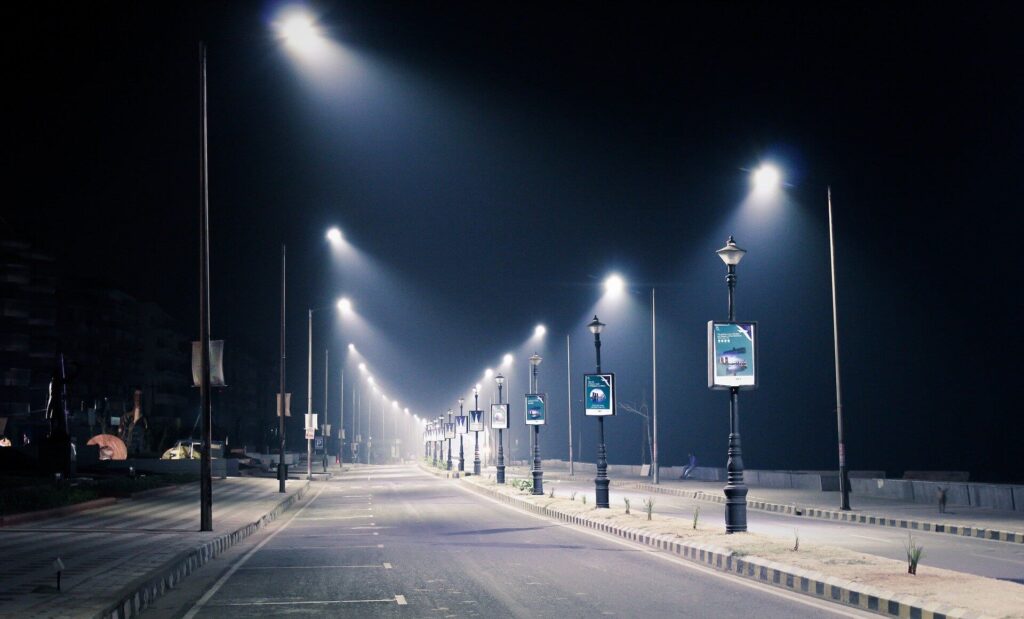“LED STREET LIGHTS ARE MUCH MORE ENERGY EFFICIENT AND ECONOMICAL”
LEDs take #1 spot for street lighting
Because of their increased luminous efficacy, reliability, and desirable color rendering qualities, white light-emitting diodes (LEDs) have been considered as the replacements for high pressure sodium (HPS) for street lighting.
Central among the advantages of LEDs is that they have extremely long lives – an LED light can last 100,000 hours. Also, they are highly energy efficient and have reduced maintenance costs because of their long lives. Moreover, they don’t contain toxic chemicals like mercury, as is the cases in high-pressure sodium lamps or mercury-vapor lamps.
LEDs are highly energy efficient. They produce 80 lumens per watt whereas traditional streetlights can only muster 58 lumens per watt. They need no warm up- LEDs are quick to reach their highest illumination; also they don’t produce any ultra violet ray.
LEDs produce directional lights- light emitted in one direction, rather than a diffused glow- they can be used to direct light on specific area. Additionally, they can be regulated as per the situation. In some countries LED street lights are kept at dim level, with their brightness level increased only when pedestrians walk by.
Different technologies of LED used in Street Lighting
LED lights have seen many technology upgradations. Currently there are two prevailing types – SMD and COD LEDs.
– SMD LED
SMD (surface mount device) are the most common LEDs in the market. The LED chip is permanently fused to a printed circuit board. This chip can include a red, green and blue diode to produce simply any color by changing the output level. SMD chips are also known to be bright. They can produce 50-100 lumens per watt.
– COB LED
Chip on Board (COB) is the most recent development in LED technology using chips with multiple diodes (typically 9 or more). There is no casing with COB technology which enables a much denser LED array of light compared to SMD. A consistent and controlled light beam is given off without any visible individual light points, thus offering great optics. COB offers a greatly improved lumen per watt ratio compared with SMD LED technology. COB technology gives the best conditions for optimal cooling, which in turn will increase efficiency and lengthen the overall life of the lamp.

